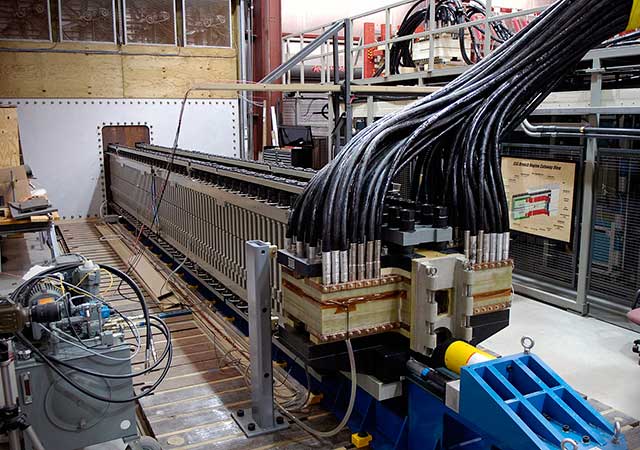Japan To Develop Railguns To Intercept China’s Hypersonic Missile
Japanese Defense Ministry will develop an approach to intercept hostile missiles by using magnetically-powered projectiles to counter the hyper-sonic missiles developed by other nations such as Russia, China, and North Korea.

The ministry is focusing its efforts on railgun technology which can launch projectiles when current is induced to the magnetic field. These shots are more powerful than those fired by conventional intercept systems and can shoot continuously.
This next generation of weaponry will easily intercept long-range missiles and add to the country’s multilayer intercepting ability.
Hypersonic weapons, which move more than five times that of the sound, are believed to be near to being used in real-world applications. In November, The Financial Times reported that China could launch a jet missile over the South China Sea at hypersonic speed.
The other two countries have also shown signs of possessing a similar hypersonic technology. North Korea has claimed that a missile dropped into the Sea of Japan in September was a hypersonic missile. Russian President Vladimir Putin plans to deploy hypersonic cruise missiles later this year.
Japanese authorities regard Hypersonic weaponry as the next level of weapons for military use. They believe that Japan must immediately strengthen its deterrence to face many threats, especially among growing tensions from China.
Japan is working on railgun systems not only to stop missiles but to prevent the possibility of one being shot at all, an official told Nikkei.
Railguns also shoot interceptors at various speeds. By altering the amount of electricity they generate, operators can adjust the speed at which an interceptor’s speed is. These decisions will be based on the rate of the incoming missiles. It’s hard to control the speed of rockets launched using conventional design propellants. The tiny size of the railgun’s “bullets” additionally gives the missiles a certain amount of concealment.
Travel trajectories of hypersonic missiles are hard to predict since they don’t have a simple parabolic path. Therefore, conventional intercept systems that target ballistic missiles along parabolic routes can’t stop these missiles.
It will strengthen Japan’s missile responses capabilities, which some experts identify as being the “hole that Japan’s defense is lacking.” Alongside including railgun interceptors into its missile defense system, Japan is considering long-range missiles that could permit it to launch deadly missiles from some distance. In combination, the systems will make a three-tiered defensive.
Source: NIKKEI Asia
Also read about Japan is manufacturing a Fighter jet with Capabilities of F-22 and F-35
